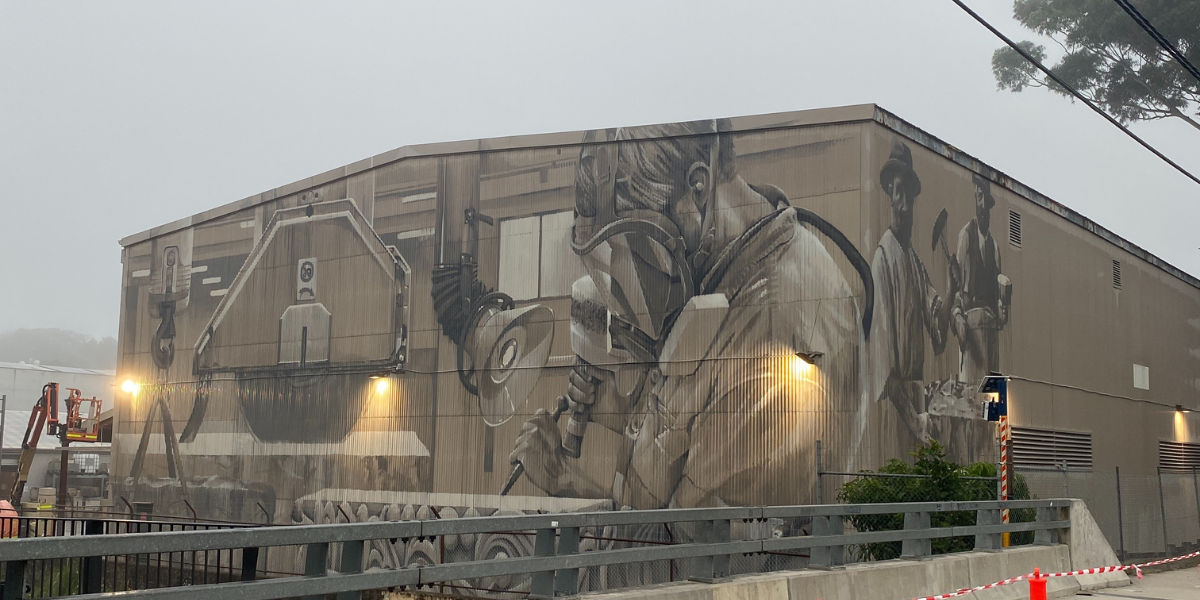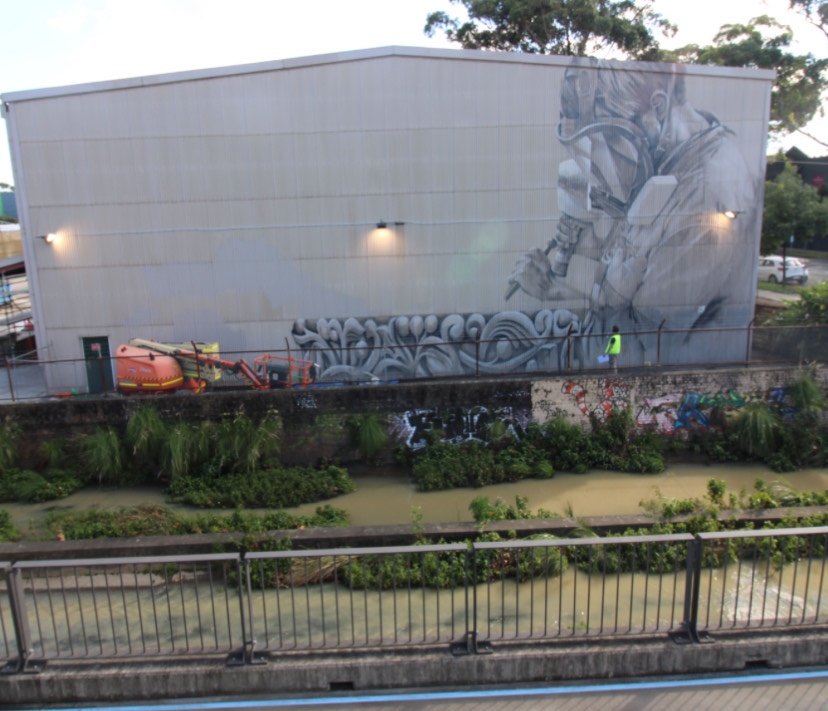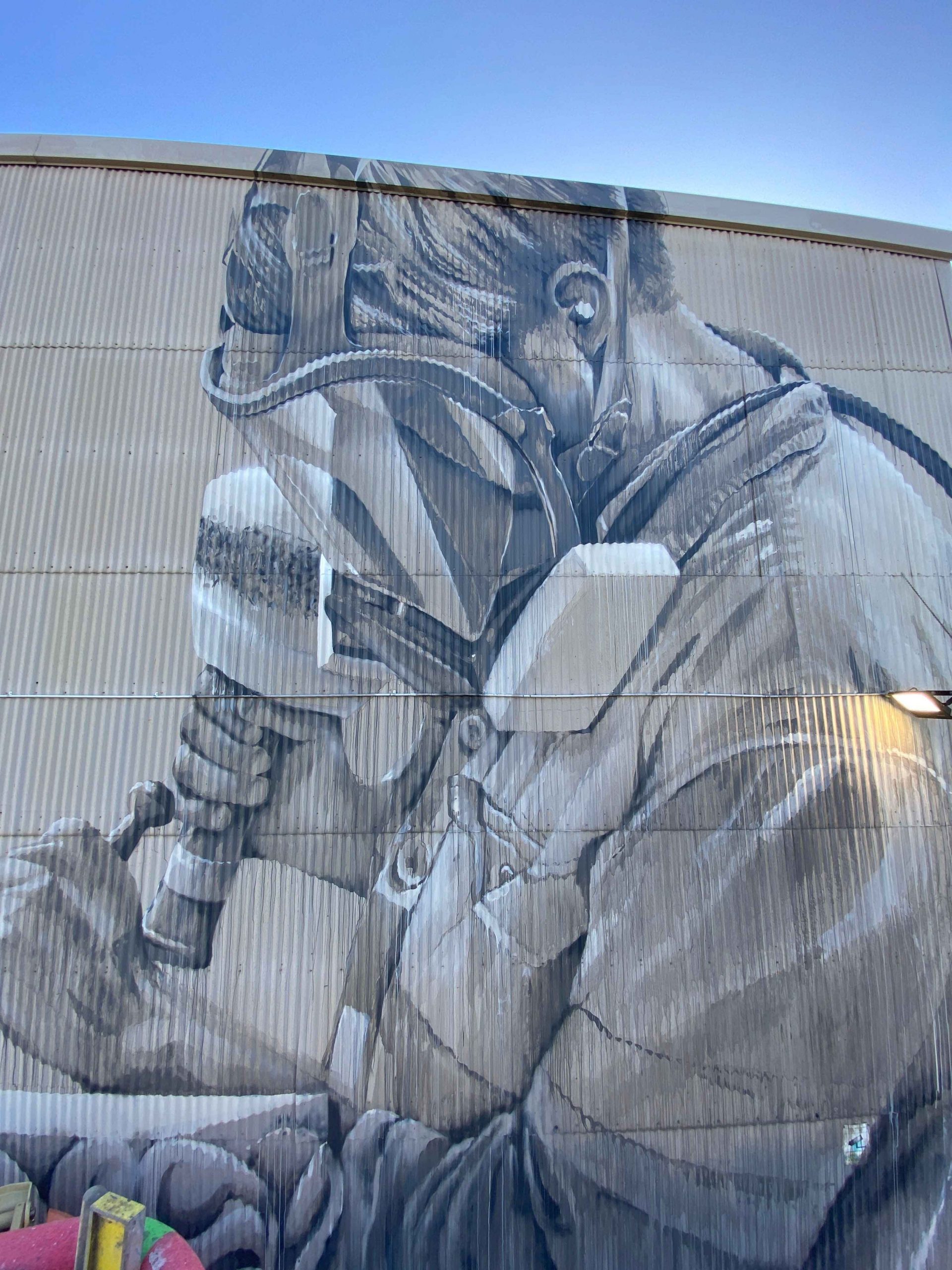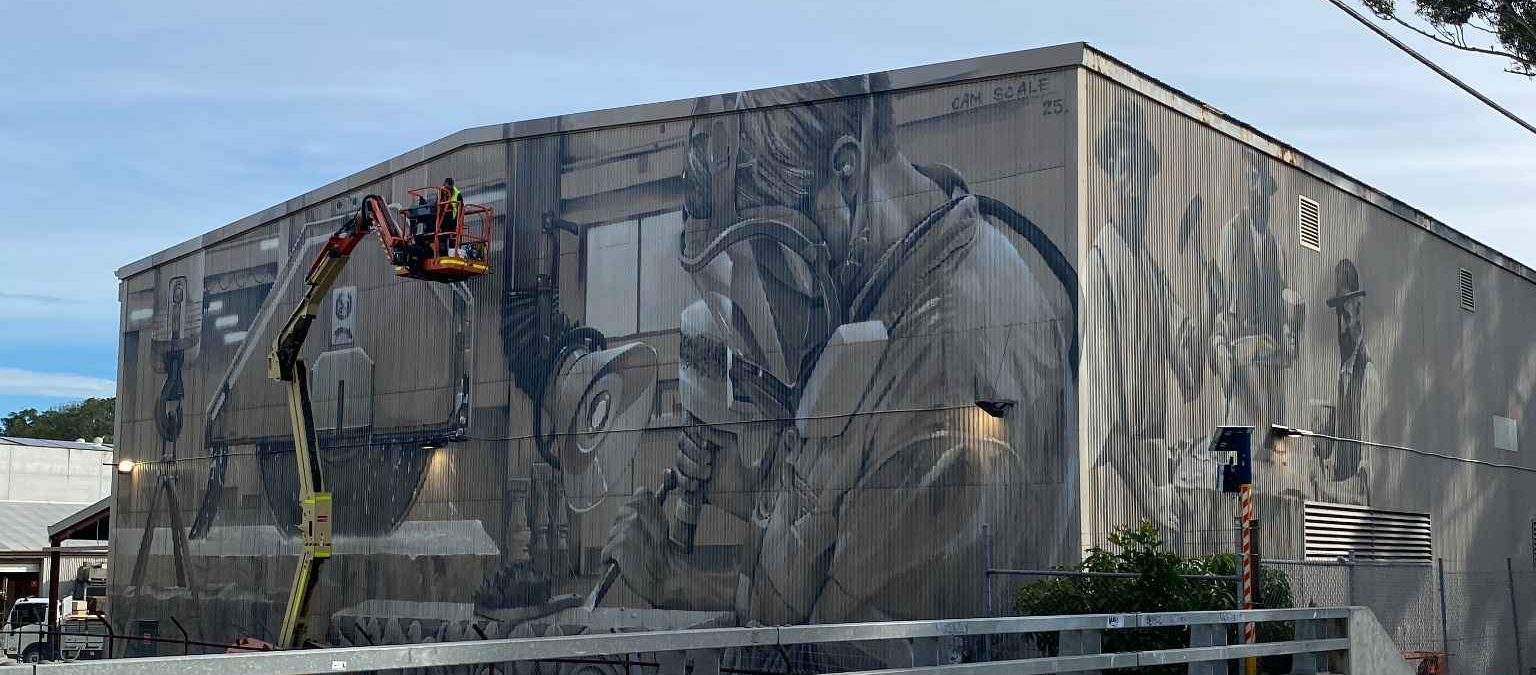
Reviving Craft Through Scale: Cam’s Monumental Mural at Heritage Stoneworks
When Public Art Meets Generational Craft
Sometimes the most meaningful artworks are not created on gallery walls but on the timeworn surfaces of our urban spaces. Cam’s recent mural on the side of the Saw Shed at Heritage Stoneworks is a masterclass in storytelling through public art.
Spanning over 32 meters across and 11 meters high, this large-scale monochromatic mural pays homage to the generations of stonemasons who have worked quietly behind these corrugated iron walls—shaping the very foundations of Sydney’s architectural beauty.
The Artist Behind the Vision

Cam is a celebrated muralist and fine artist based in tropical Far North Queensland. Known for his emotive portraits and large-scale public artworks, Scale combines aerosol mastery with fine art techniques to deliver works that are both grounded and elevated.
His work often blurs the line between street art and classical composition—and the Heritage Stoneworks mural is no exception.
The Brief: Honour the Past, Embody the Present
Commissioned through Book An Artist, the brief was ambitious yet open-ended: pay tribute to the artisans of the Heritage Stoneworks team by creating a mural that blends with the site while telling its story.
Cam’s solution was to create a “statuesque narrative,” drawing directly from life on-site. From workers cutting stone with giant wet saws to traditional hammer-and-chisel technique, every image in the mural is based on real people and real moments within the space.
“The imagery was captured entirely on-site,” Cam shares, “It was an honour to witness both traditional and modern methods up close—something the public rarely gets to see.”
Conquering Corrugated Iron and East Coast Lows
Painting on corrugated iron is a challenge even for the most seasoned artists. The ridges distort imagery and are notoriously hard to prep. Cam tackled this head-on:
-
Preparation: Pressure-washing and sugar soap scrubbing in the rain (with the help of artist Sekt Compton)
-
Mediums Used: Watered-down acrylics for washes; aerosol for detail and depth
-
Technique: Layered tonal blending and highlights for a sculptural effect
The original designated mural space was 26×7 meters—but Cam extended the design to 32×11 meters. This not only improved the aesthetic balance but also allowed the image to breathe, compensating for the distortive surface.
“The ridges can cause a pulsing effect. Enlarging the design allowed for visual clarity, and actually helped anchor the work to the building.”
Weather added more drama. An east coast low-pressure system forced delays and working under tarps—at one point converting a boom lift into a temporary shelter.
More Than a Wall: A Living Tribute
This is no ordinary mural—it’s a monument to process. From stone dust to precise cuts, every visual layer echoes the legacy of craft within the shed.
“It’s like revealing a figure from within stone,” Cam explains. “This piece honours the past while making it visible to today’s world.”
Public Response and Community Impact
Throughout the project, passersby and nearby workers were actively engaged—offering encouragement, stopping for photos, and even cheering the artist on. The mural sparked curiosity and pride, prompting many to reflect on what happens within these heritage spaces.
“It was great to see people stopping and appreciating the work. These walls hold stories—now more people know them.”
Made Possible by Partnership
This project was brought to life thanks to a successful collaboration between Cam, Heritage Stoneworks, and Book An Artist—a platform connecting businesses and artists for meaningful visual projects. From administration to insurance and coordination, the platform ensured a smooth commissioning process.
“BAA has been really helpful and beneficial in creating this opportunity,” says Cam. “They handled so much of the admin, and Jarina from the ops team was fantastic—responsive and clear from start to finish.”
Conclusion
Cam’s mural at Heritage Stoneworks is more than a beautiful image—it’s a story carved into iron, a tribute to centuries of handcraft, and a reminder of how public art can connect people to place.
As Cam says, “This was a brilliant project to be involved in. The trust, the freedom, the history—it all came together.”
Check out top-rated local artists near you!
Are you an artist ? Sign Up














